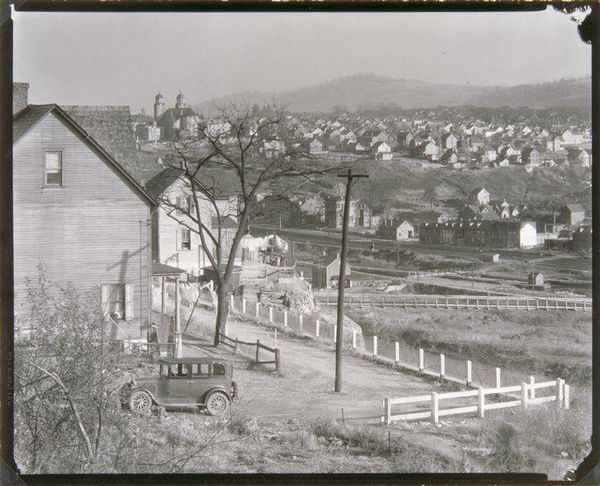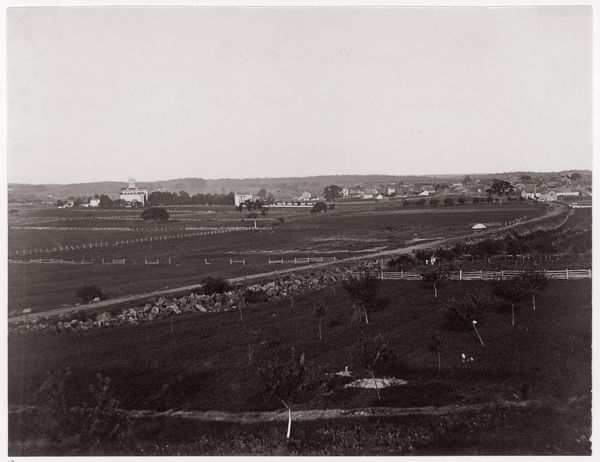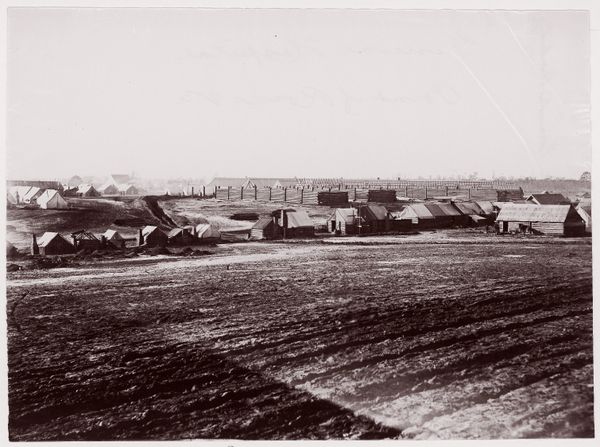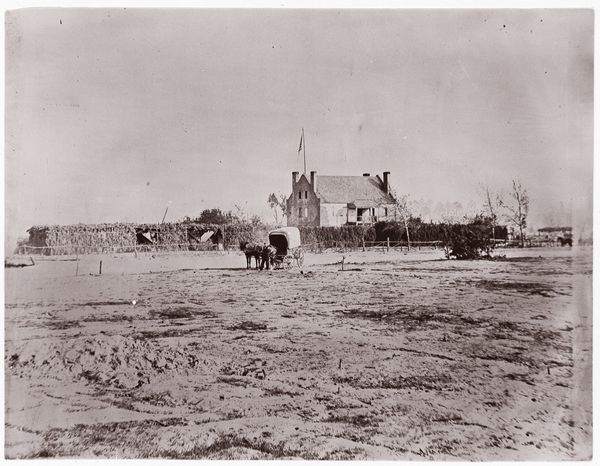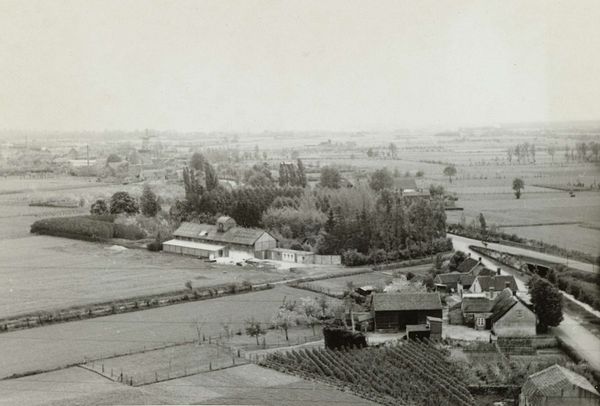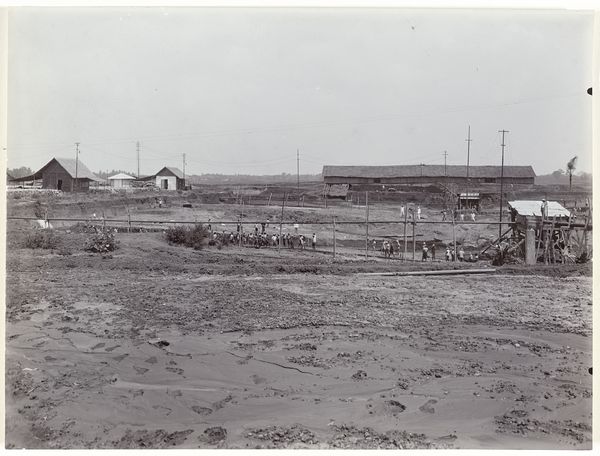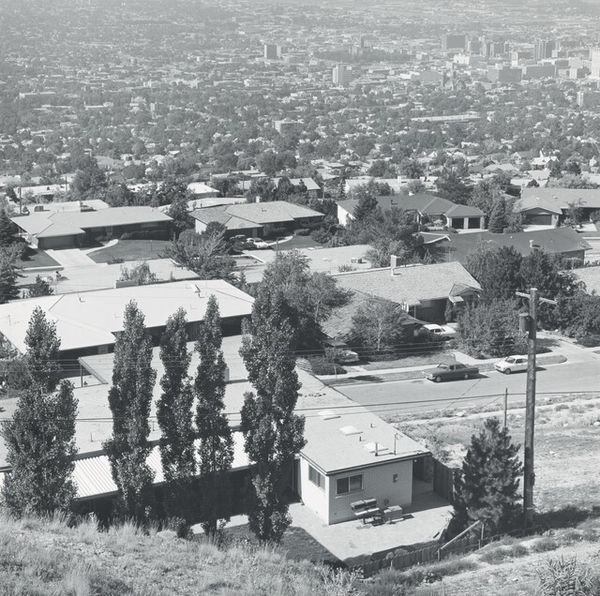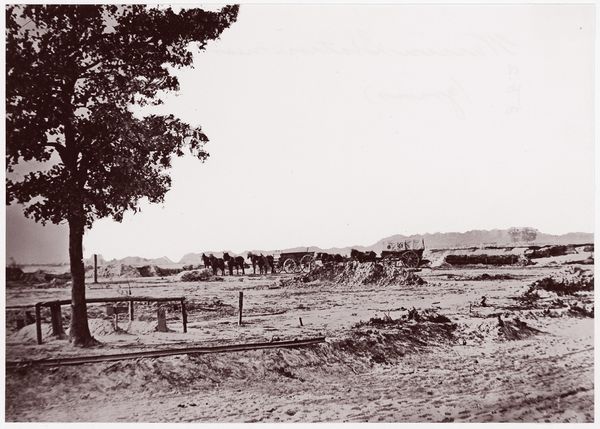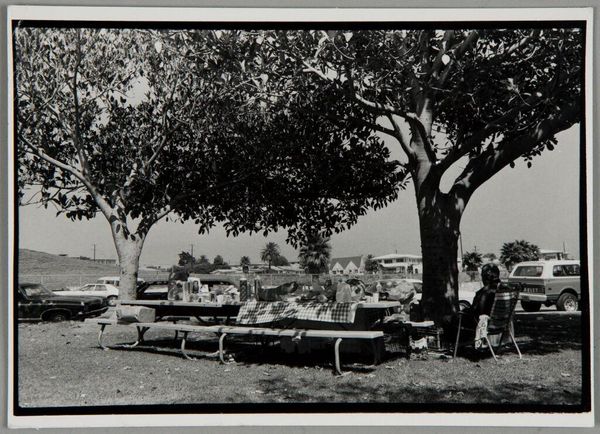
gelatin-silver-print, photography, gelatin-silver-print
#
gelatin-silver-print
#
monochrome colours
#
photography
#
gelatin-silver-print
#
united-states
#
cityscape
#
realism
#
monochrome
Dimensions: 7 1/2 x 9 1/2 in. (19.05 x 24.13 cm) (image)8 x 9 15/16 in. (20.32 x 25.24 cm) (sheet)14 7/8 x 18 7/8 x 1 1/2 in. (37.78 x 47.94 x 3.81 cm) (outer frame)
Copyright: No Copyright - United States
Curator: Welcome. This is Walker Evans's "View of Easton," a gelatin silver print from 1935. Editor: It's amazing how much detail he captured. It feels so documentary, so real. I am curious: what formal aspects stand out to you in this image? Curator: Notice how Evans uses the river as a strong horizontal line, dividing the composition into distinct planes. The dense cluster of buildings above contrasts sharply with the more open, rural foreground. Consider also the tonality – the subtle gradations of gray create depth and texture. Are you sensing a hierarchy within this stratified composition? Editor: I see the division and how the darker tones highlight the industrial section near the river's edge, whereas lighter, smaller houses in the background give it a faded perspective and further depth of field. Curator: Precisely. The repetition of shapes – the rectangular forms of the buildings, the vertical lines of the chimneys and trees – create a visual rhythm, a structural logic that is compelling. Do you notice any sense of balance or imbalance in the arrangement of these forms? Editor: I suppose the factories in the center ground feel quite imposing, especially as compared to the quieter cluster of houses at the bottom of the picture, that may indicate a societal structure. Curator: Yes. This deliberate structuring and strategic viewpoint are essential elements of his work, shaping how we perceive this depiction. This manipulation of space serves a larger artistic end, do you agree? Editor: Absolutely, analyzing this work through that formalist lens reveals complexities I initially overlooked. It’s more than just a document; it’s a constructed vision. Curator: Indeed. These elements coalesce into a powerful statement on place and perhaps progress itself, through Evans' structured representation.
Comments
No comments
Be the first to comment and join the conversation on the ultimate creative platform.

